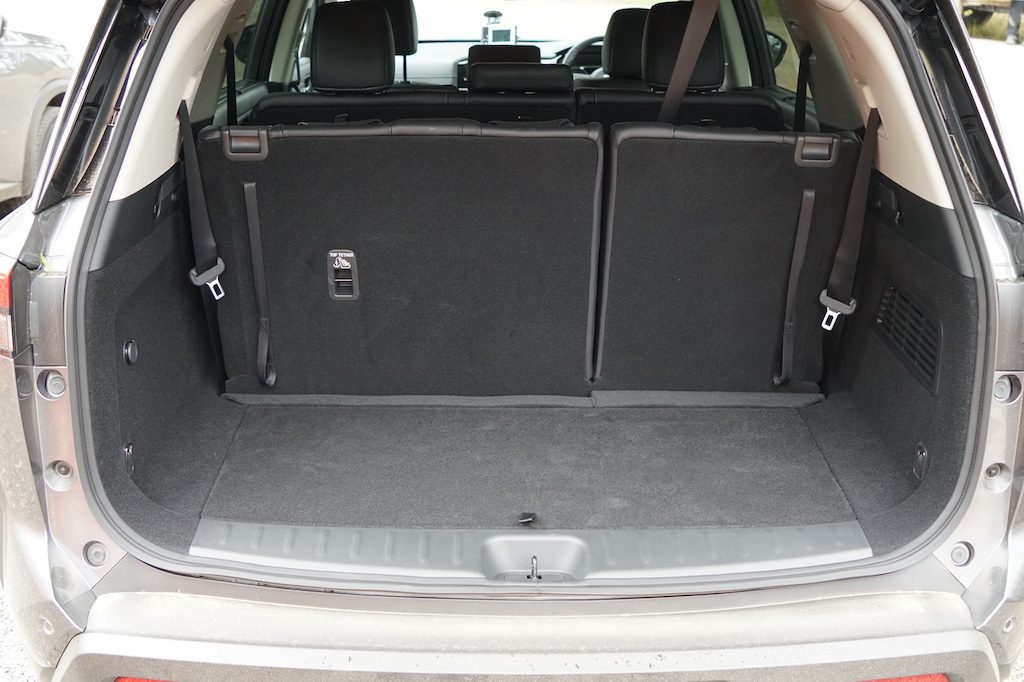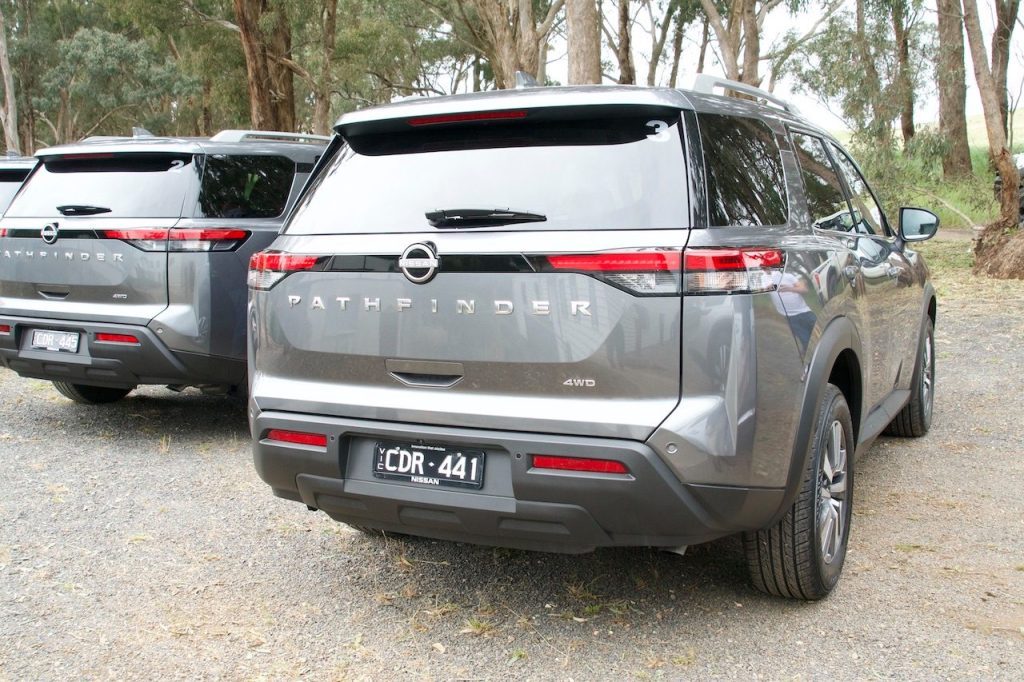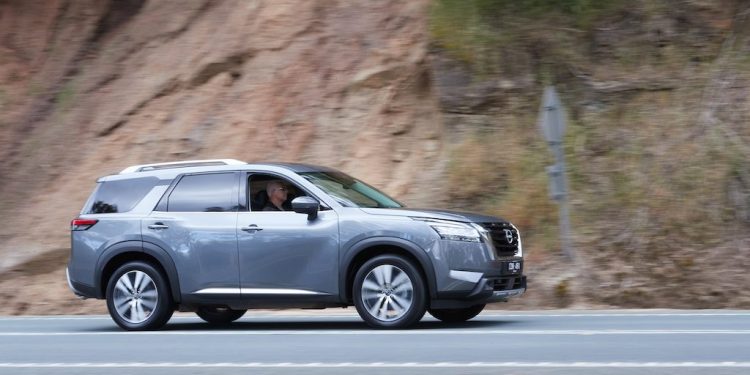Nissan Pathfinder – First Drive
Words NZ Autocar | Images Nissan/PL
The latest Pathfinder returns after a brief absence, and is clearly from the same family as the medium-sized X-Trail, with similar outlines and V-Motion grilles, but it’s noticeably bigger and rather fancier inside with more lounge-like sofa chairs. And on the move the V6 is more refined while the ride is simply plush.
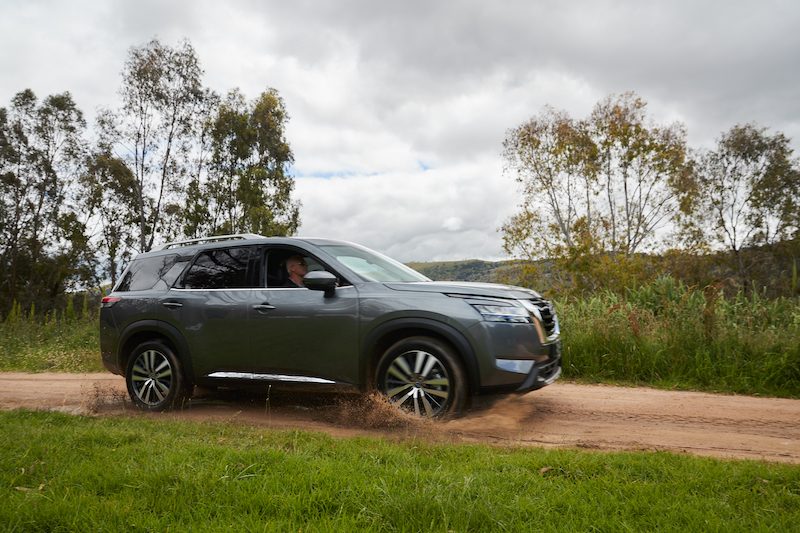
But it’s also clearly much heavier on the go, the weight transfers at the front more marked. That’s also reflected in mean fuel use figures, the average showing 11.2L/100km on the Pathfinder, 7.6 for the X-Trail.
Pathfinder’s interior was altogether familiar after exiting the X-Trial, except that everything seemed plusher and supersized, especially in the back. One version has eight seats, another seven with a pair of captain’s chairs in the middle row.
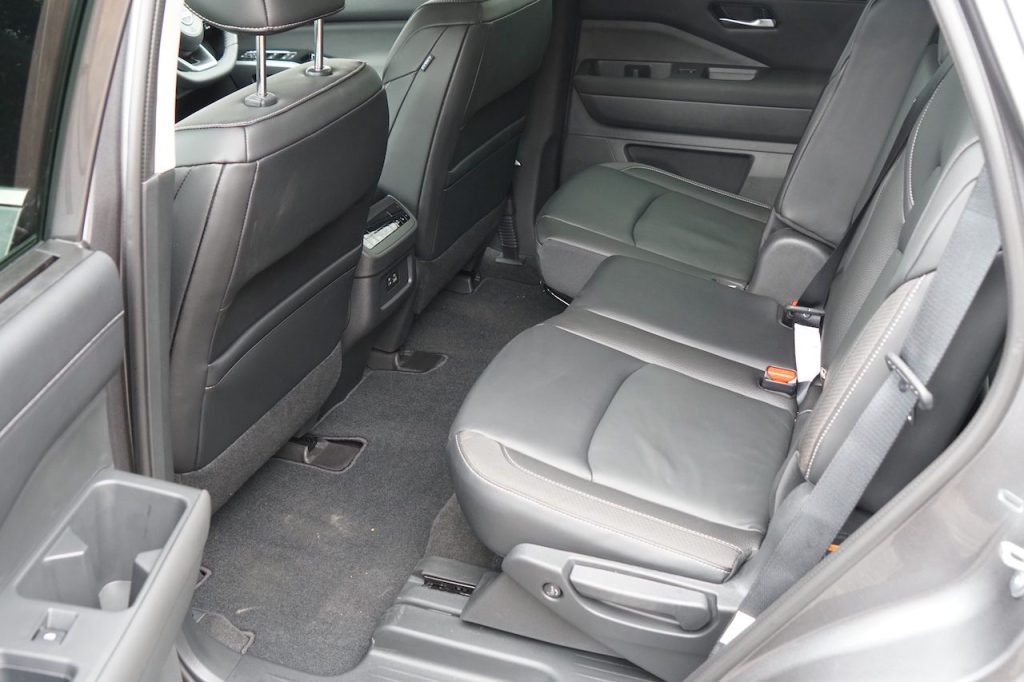
There’s an identical stubby drive-by-wire shift lever but there are differences too; where the X-Trail features butterfly opening double doors for the centre bin, there’s just a single conventional rear-hinged lid for the Pathfinder. The American also has more fine furnishings, quilted leather for the seats, and the leather extending up into the vertical aspect of the dashboard. There’s a button to initiate self parking as well.
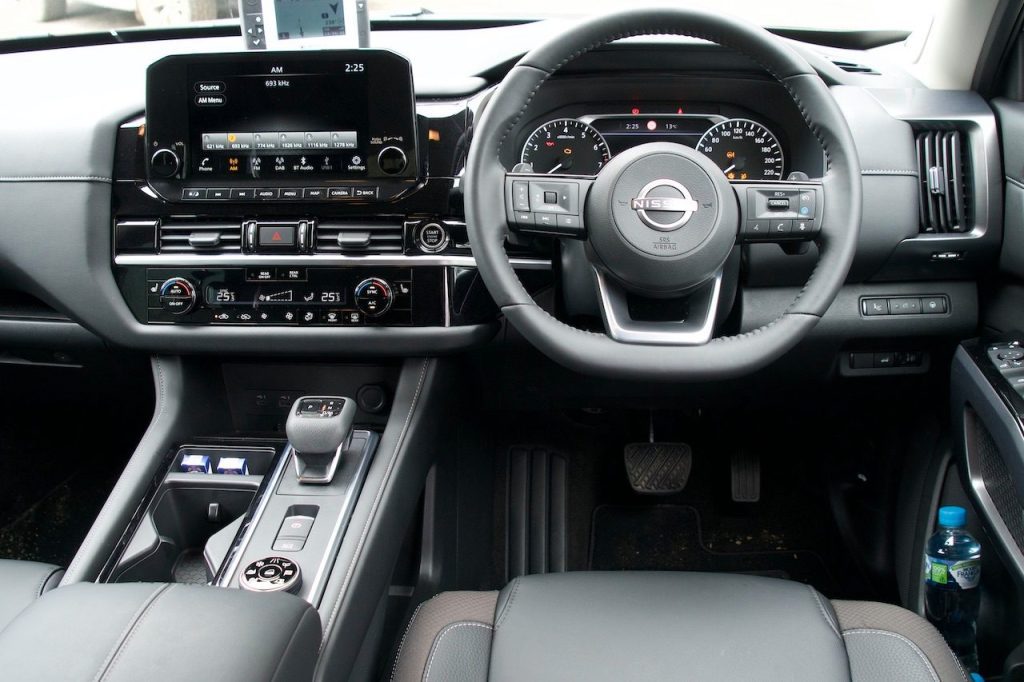
Small things you note, like damped glove compartment lids, the flat-bottomed leather bound wheel, and lashings of gloss black finishings. There’s an open rubber-lined oddments spot for cellphones and the like above the glovebox. Its stop/start button is well sited too, just to the left of the steering wheel on the vertical aspect of the dash. Output from the surround camera is relayed to a large vibrant screen, rectangular with squared off corners, and there are several camera views on offer. The widescreen head-up display is just as bright and resolving, featuring nav instructions and road sign recognition.
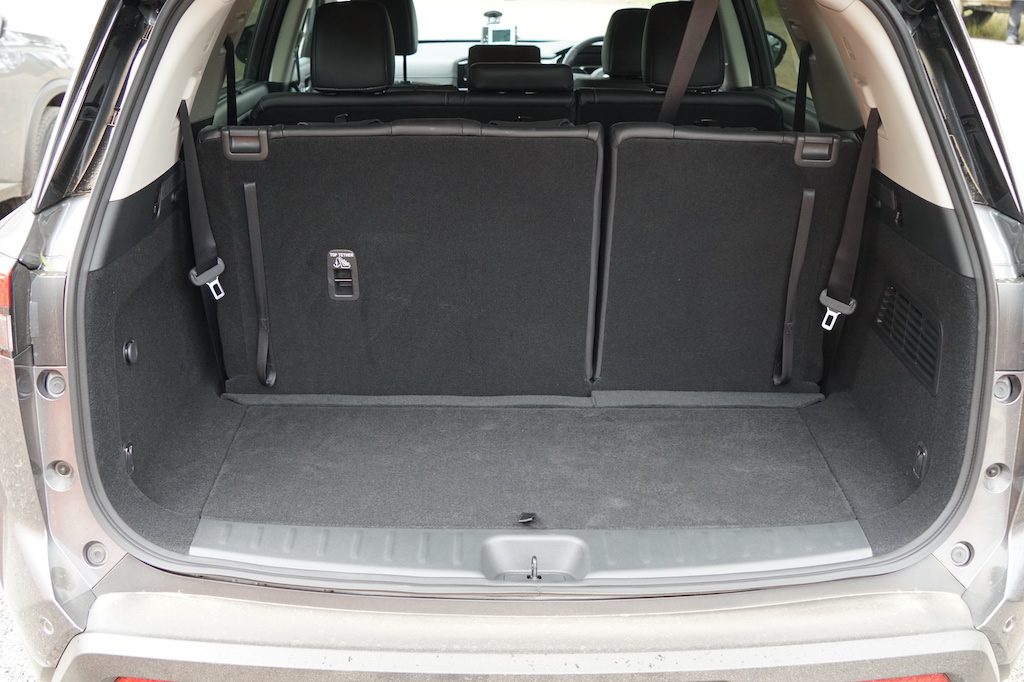
In case you’d forgotten what you bought, Nissan has you covered as ‘Pathfinder’ is writ large all over this vehicle. It’s a big solid beastie too, particularly apparent after exiting the lithe and lightweight X-Trail and punting the bigger vehicle into the first turn. Whoa Nellie. Not so much of the punting please, highlighted by its absorbent suspension tune. Clearly the suspension design was aimed at the wide open spaces of America. Not entirely perhaps, as the trails also beckon this vehicle which has settings for Mud and Ruts, Snow, Sand, and also a mode for Towing, Sport even, and Auto and Eco settings. Phew.
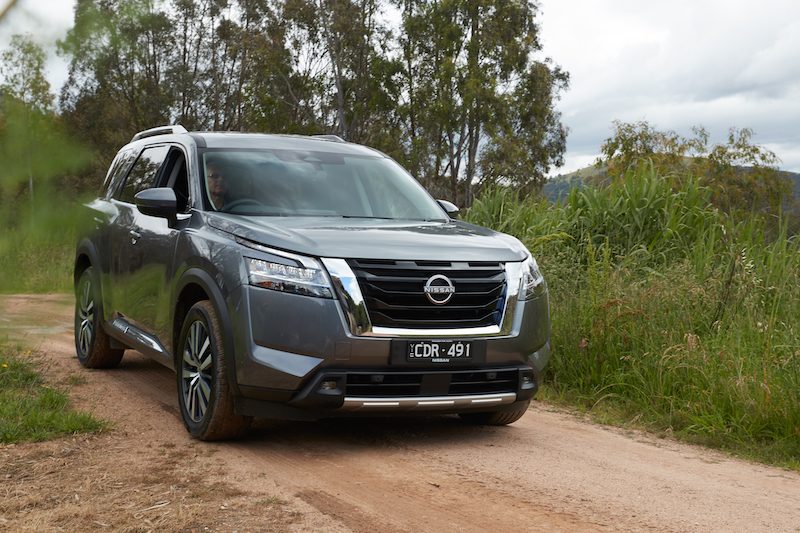
After a short stint on the blacktop, it was onto gravel, the roads sampled wide ridgerunners, with surprisingly little in the way of rain-induced crater-sized potholes. Just fine gravel that for the most part meant 100km/h cruising, rather like on the highway. The Pathfinder made short work of this; only the odd pothole slowing progress, and it felt stuck fast in corners, unshakable, refusing to let go even under provocation. The new 4wd system features direct coupling and rapid torque transfer between axles for immediate take-off in low traction situations. Its individual drive modes each have specific shift mapping, throttle response and ESP settings, along with steering weight and 4wd torque distribution.
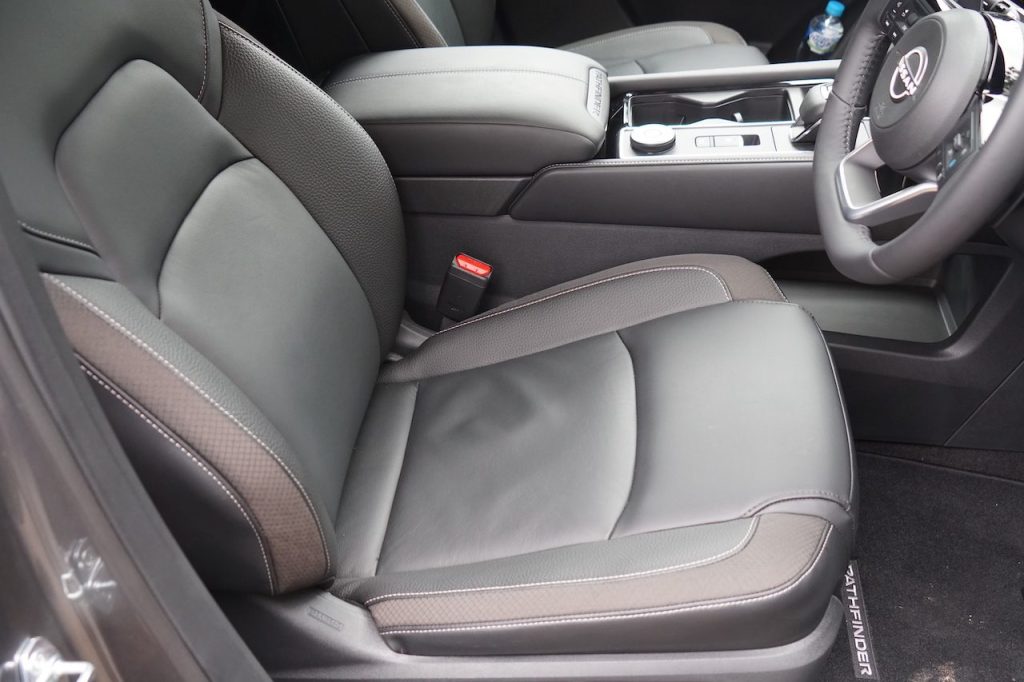
Nissan had some Seadoo jetskis at the launch which weighed close to the vehicle’s 750kg unbraked tow rating. Hooked up, we select the Tow setting on the rotary mode dial and suddenly the transmission seems to find another gear, feeling more energised, similar to Sport for responsiveness so you’re not tempted to use the shift paddles. It’s surprising the impact towing has on ride quality; it certainly doesn’t improve the ride for lumps and bumps that are flattened by the Pathfinder are transmitted back to the tow vehicle from the jetski, on account of its minimally suspended trailer. Despite that, stability is good and Pathfinder features trailer sway mitigation. Cruising at the open road speed limit with the item on behind was no real hardship, 1400rpm showing in ninth gear. Braked towing capacity increases to 2700kg in the move from a CVT to an automatic ZF nine-speed transmission.
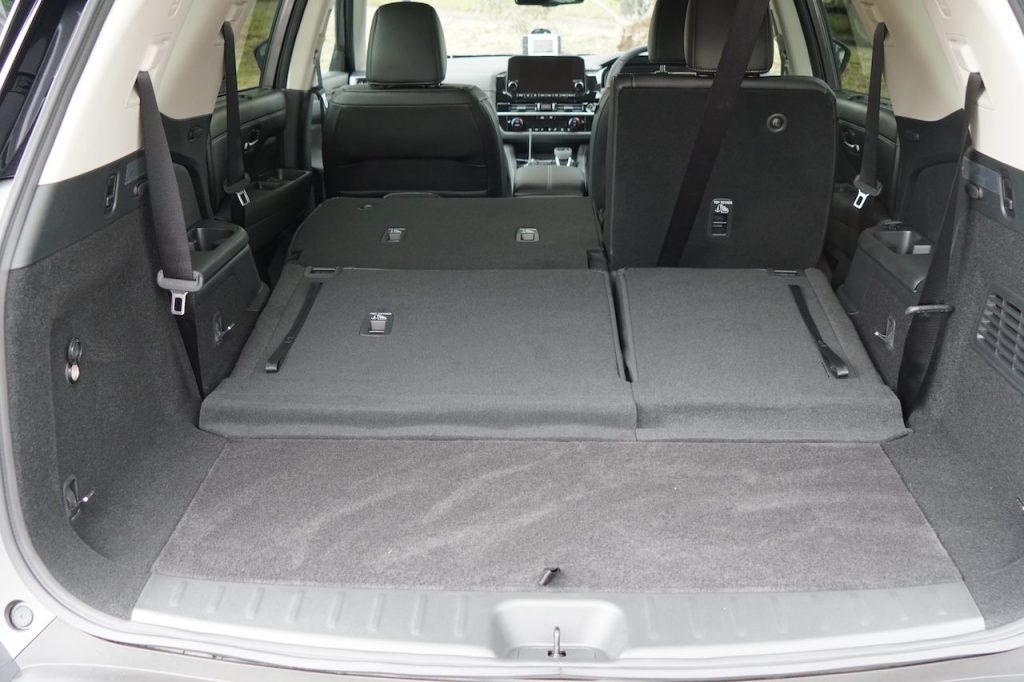
Back at the ranch, and the third row seats are electrically accessed, the second row sliding forward and the seatbacks moving out of the way for easier access. Footroom and legroom are adjustable too, the second row sliding forward to suit. Occupants in the middle row have their own zone of AC and are further pampered with their own seat heaters. The floor is completely flat so all three occupants are equally catered to.
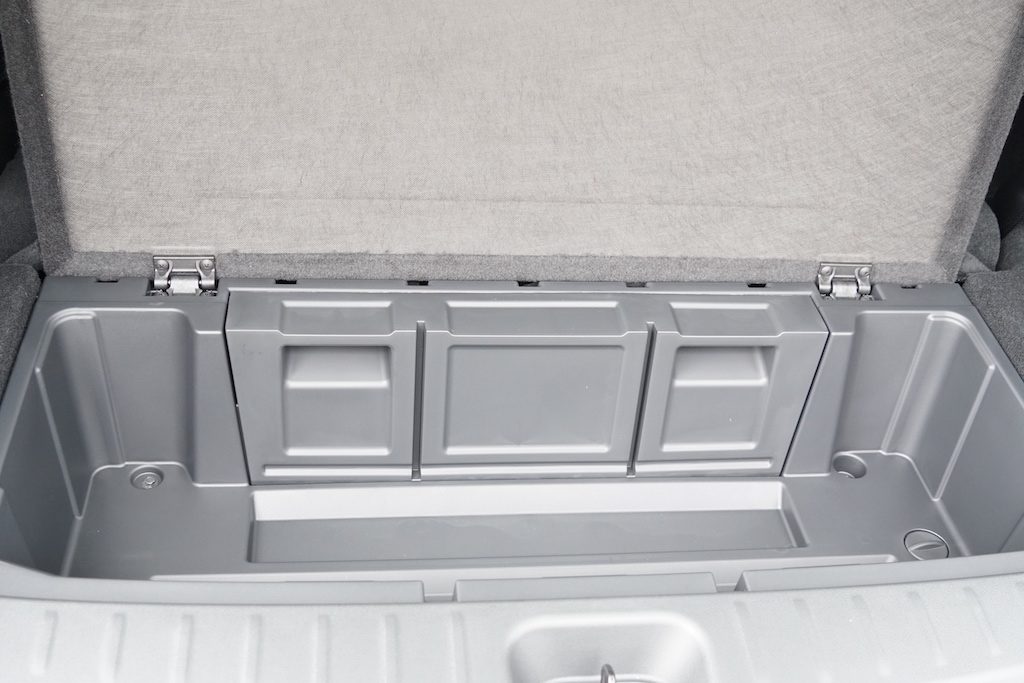
And even with all seats in use, there’s still 205L of luggage capacity available, along with a generous below-floor box at the rear of the hold for wet gear and the like.
Pathfinder comes up against the likes of Highlander, now a hybrid, Grand Cherokee, Sorento and Santa Fe, CX-9 and Everest in a reasonably busy seven-seat sector.
